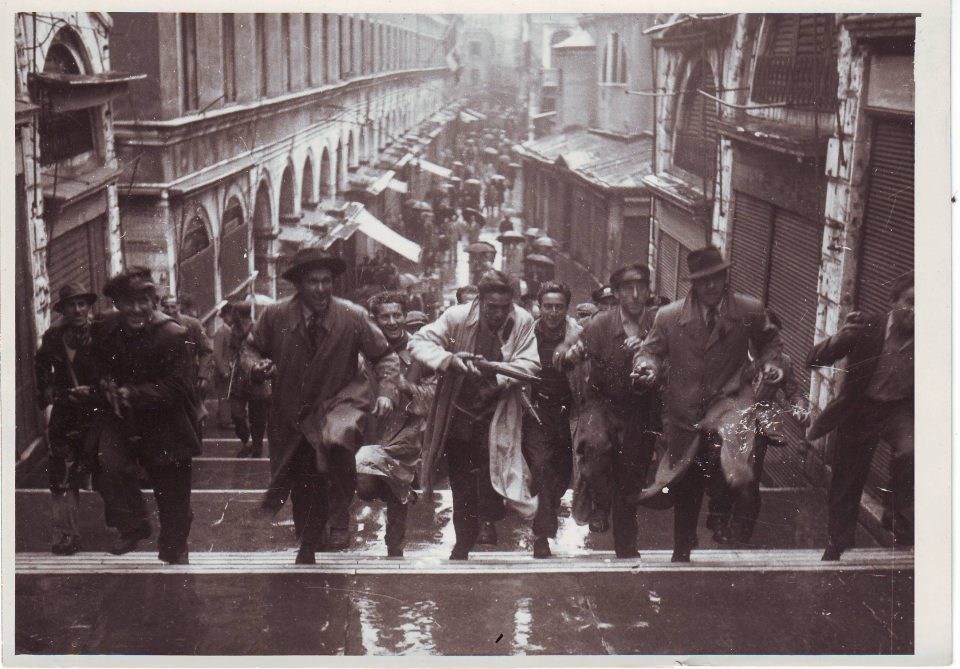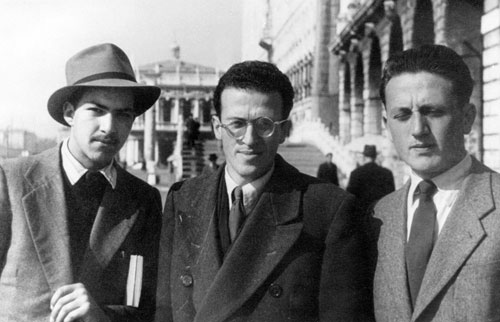

The fall of fascism on July 25, 1943, allowed a closer connection of student groups with local antifascist political forces.
After September 8, 1943, with the proclamation of the armistice and the rebirth of neo-fascism in northern Italy under the banner of the Italian Social Republic, the sentiment of dissent and opposition, hitherto manifested almost in whispers or through a few small demonstration actions, found greater awareness. What until the day before fascist propaganda hastily branded as defeatism began to mature into more effective and motivated forms and expressions.
That the armistice had radically changed the situation and that even the school was now seen as a potential danger was intuited in the days immediately following September 8 when about a hundred young students of the naval mechanical school were captured by the occupying German troops and paraded through the streets of the city — from the Celestia Field to the train station — before being deported to German internment camps.
While it is challenging to record precisely the extent, spread, and degree of penetration of the Resistance movement in the school world, it is undoubtedly true that from this time on, numerous young people and students matured their decision to serve in the ranks of the Resistance, choosing the more complex and risky path of going underground and joining partisan bands. In the city, too, there were several episodes involving precisely the city’s high school students. For example, in the fall of 1943, a group of very young students carried out a night raid on the premises of the “Foscarini” and the “Polo,” which were filled with antifascist and anti-German writings.
In many cases, decisive was the example and teaching offered by teachers. Numerous testimonies recall the fundamental role played by Venetian teachers in fostering antifascist and democratic intentions and convictions: at the “Paolo Sarpi” Institute Carlo Izzo and Riccardo Dusi; at Marco Polo Francesco Rossi; at the “Benedetti” Lyceum Francesco Semi, Sandro Gallo and Francesco Tullio Roffarè; at the “Foscarini” Agostino Zanon Dal Bo, are just some of the names of teachers who clearly and with no bit of courage showed their students the path to follow.
Teachers at the Academy of Fine Arts (Armando Pizzinato, Elena Bassi, Don Manzin) also collaborated with the antifascist parties by promoting meetings and distributing posters and leaflets. Every school in the historic center and mainland made a small contribution to the antifascist struggle.
Nazi-fascist repression did not spare students and professors; several high school students, including Cesco Chinello and Ranieri Da Mosto, were denounced and jailed for their antifascist activities. Agostino Zanon Dal Bo and Armando Pizzinato also ended up in jail, while other professors suffered expulsions and suspensions, such as Professor Pizzolato, a physical education teacher at the “Tommaseo,” who was acquitted for her refusal to take the required oath for O.N.B. employees.
Some paid with their lives for their conviction and courage: elementary school teacher Ubaldo Belli, along with four other antifascists, was murdered in cold blood by a unit of the Republican National Guard on the night of July 7-8, while Sandro Gallo met his death during a fight with Nazi troops in the Belluno mountains.
Overall, the contribution made by the Venetian school to the Resistance movement was significant, a page of history that still awaits a complete and careful reconstruction.
Text prepared by Prof. Maria Teresa Sega